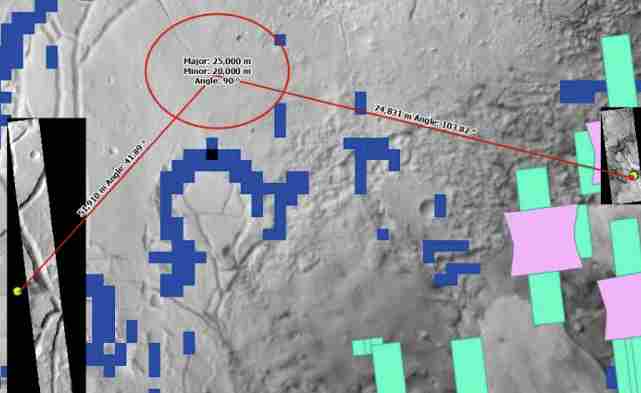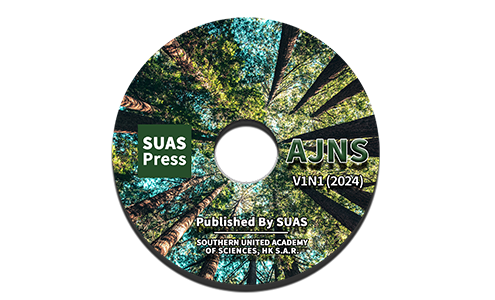Assessing Potential Mars Landing Sites Based on Groundwater-Induced Hydrated Mineralogy and Geomorphology
DOI:
https://doi.org/10.70393/616a6e73.333038ARK:
https://n2t.net/ark:/40704/AJNS.v2n3a01Disciplines:
Earth SciencesSubjects:
GeologyReferences:
16Keywords:
Mars, Hydrated Minerals, Habitability, Landing Site Selection, Danielson Crater, Aram Chaos, Arabia Terra, Subsurface WaterAbstract
As the thorough exploration of Mars H2O, identifying the existence of a Martian biosphere becomes imperative. This paper discussing hydrated minerals on Mars offers a critical pathway to assessing its past habitability and potential subsurface biosphere. This study presents a multi-criteria evaluation of three candidate landing sites—Danielson Crater, Aram Chaos, and southwest Arabia Terra—selected for their scientific relevance to aqueous processes and their compliance with engineering constraints for future surface missions. Using integrated datasets from CRISM, HiRISE, MOLA, and other orbital instruments, the analysis emphasizes morphological diversity, mineralogical signatures, and preservation potential. Danielson Crater is identified as the most favorable site, combining well-preserved stratigraphy with strong evidence of phyllosilicate-rich layered deposits. This framework can serve as a reference for future Mars exploration missions targeting signs of past groundwater activity and habitability.
Downloads
Metrics
References
[1] Poulet, F. et al. (2005) ‘Phyllosilicates on Mars and implications for early martian climate’, Nature, 438(7068), pp. 623–627. doi:10.1038/nature04274.
[2] Grotzinger, J.P. et al. (2012) ‘Mars Science Laboratory Mission and Science Investigation’, Space Science Reviews, 170(1–4), pp. 5–56. doi:10.1007/s11214-012-9892-2.
[3] Golombek, M. et al. (2012) ‘Selection of the mars science laboratory landing site’, Mars Science Laboratory, pp. 641–737. doi:10.1007/978-1-4614-6339-9_18.
[4] Wan, X. (2021) ‘Design, function, and implementation of China’s first LIBS instrument (MarSCoDe) on the Zhurong Mars Rover’, Atomic Spectroscopy, 42(5). doi:10.46770/as.2021.608.
[5] Michalski, J.R. et al. (2013) ‘Groundwater activity on Mars and implications for a deep biosphere’, Nature Geoscience, 6(2), pp. 133–138. doi:10.1038/ngeo1706.
[6] Mars Odyssey: Multimedia (no date) NASA. Available at: https://mars.nasa.gov/odyssey/gallery/latestimages/20030724a.html.
[7] Carter, J. et al. (2013) ‘Hydrous minerals on Mars as seen by the CRISM and Omega Imaging Spectrometers: Updated global view’, Journal of Geophysical Research: Planets, 118(4), pp. 831–858. doi:10.1029/2012je004145.
[8] Squyers, S. W., et al. (2004), In situ evidence for an ancient aqueous environment at Meridiani Planum, Mars, Science, 306, 1709–1713.
[9] Glotch, T.D. and Christensen, P.R. (2005) ‘Geologic and mineralogic mapping of aram chaos: Evidence for a water‐rich history’, Journal of Geophysical Research: Planets, 110(E9). doi:10.1029/2004je002389.
[10] Hartmann, W.K. (2005) ‘Martian cratering 8: Isochron refinement and the chronology of Mars’, Icarus, 174(2), pp. 294–320. doi:10.1016/j.icarus.2004.11.023.
[11] Baioni, D., Murana, A. and Tramontana, M. (2014) ‘Amazonian thermokarst in Danielson Crater, Arabia Terra Region, Mars’, Planetary and Space Science, 104, pp. 310–317. doi:10.1016/j.pss.2014.09.006.
[12] Mars crater shows evidence for climate evolution (no date) ESA. Available at: https://www.esa.int/Science_Exploration/Space_Science/Mars_Express/Mars_crater_shows_evidence_for_climate_evolution (Accessed: 15 December 2023).
[13] Carr, M. H. (1979), Formation of Martian flood features by release of water from confined aquifers, J. Geophys. Res., 84, 2995–3007.
[14] Nummedal, D. (1978), The role of liquefaction in channel development on Mars, Report of the Planetary Geology Program, 1977–1978 (abstract), NASA Tech. Memo., 79729, 257–259.
[15] Sharp, R. P. (1973), Mars: Fretted and chaotic terrains, J. Geophys. Res., 78, 4073–4083.
[16] Shroder, E.-C. J. F. (2022). Treatise on Geomorphology (second edition). Academic Press.

Downloads
Published
How to Cite
Issue
Section
ARK
License
Copyright (c) 2025 The author retains copyright and grants the journal the right of first publication.

This work is licensed under a Creative Commons Attribution 4.0 International License.














